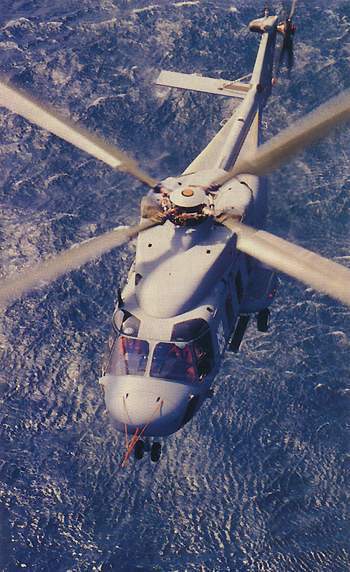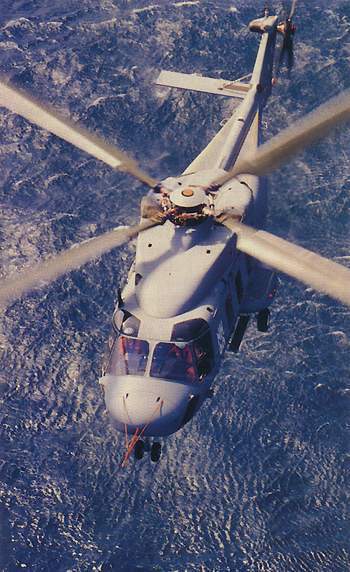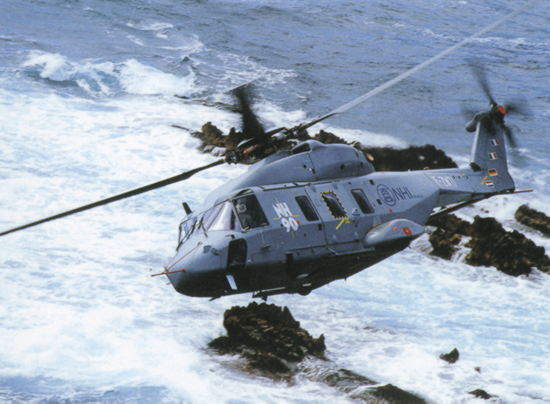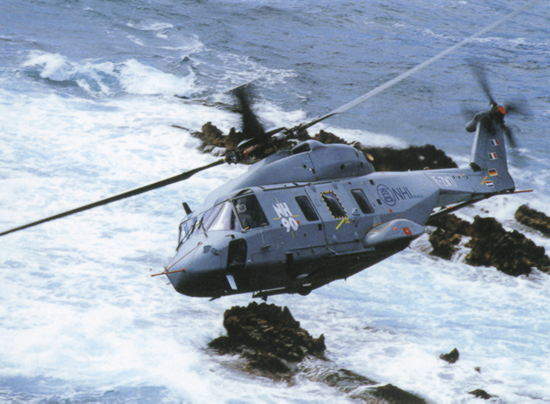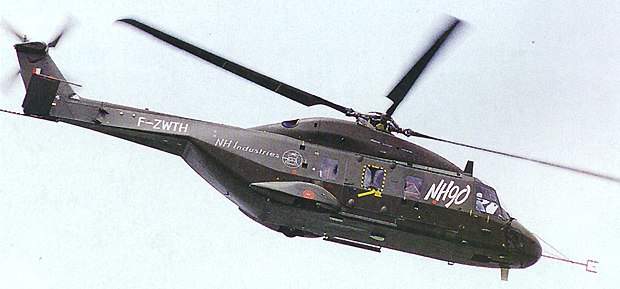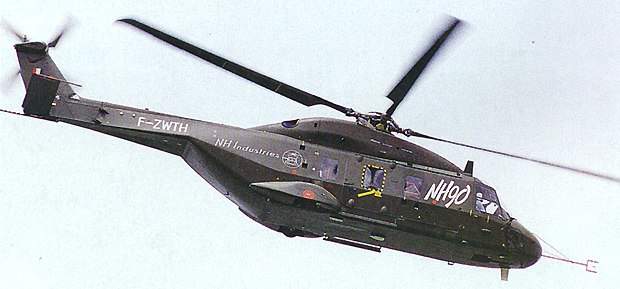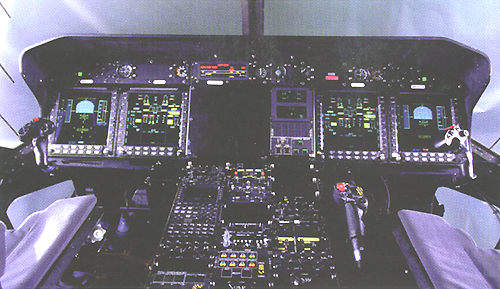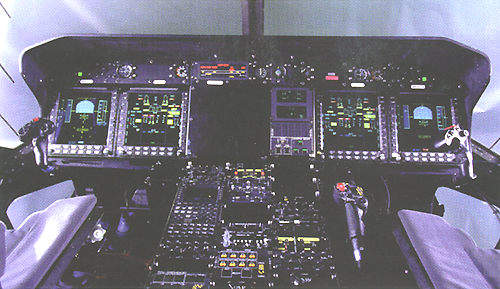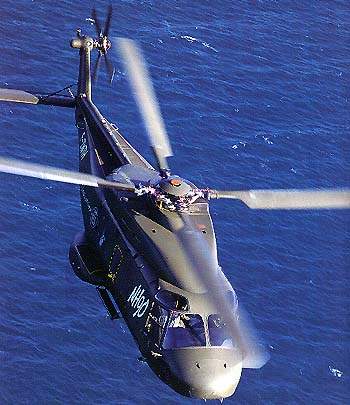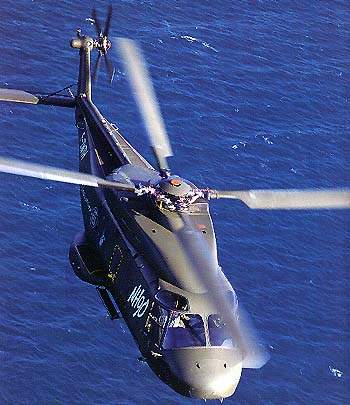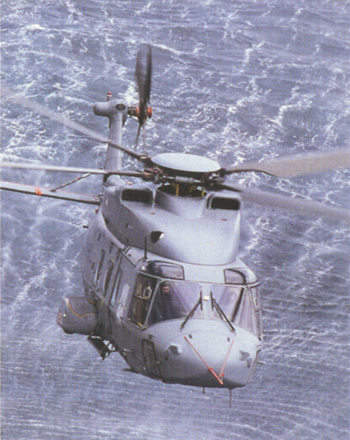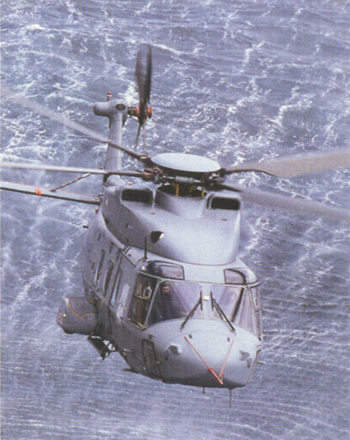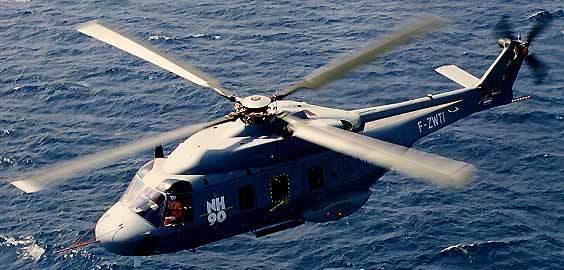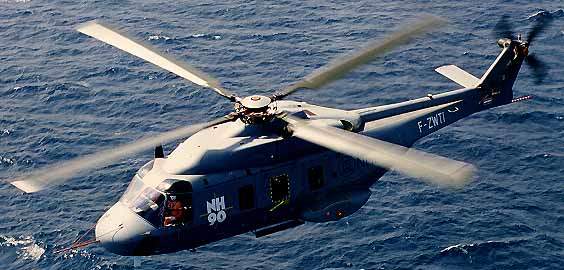The Nato frigate helicopter (NFH) is one of two versions of the NH90 twin-engine multirole helicopter being developed by NH Industries. The other version is the NH90 TTH tactical transport helicopter.
NH Industries, the prime contractor for the programme, is a joint venture company owned by AgustaWestland (32%) of Italy, Eurocopter (62.5%) and Stork Fokker (5.5%) of the Netherlands. Eurocopter is a subsidiary of EADS (European Aeronautics Defence and Space) company formed by DaimlerChrysler Aerospace of Germany, Aerospatiale Matra of France and CASA of Spain.
In June 2000, the participating countries signed a contract for the production of 243 NH90s: France 27 NFH, Germany 80 TTH (with an option on a further 54), Italy 46 NFH and 70 TTH, and the Netherlands 20 NFH. Germany converted 42 options to firm orders (30 TTH for the Army and 12 TTH for the Air Force) in June 2007. The first series production TTH helicopter made its maiden flight in May 2004 and the first NFH in August 2007. France ordered an additional 12 TTH variants for the French Army Aviation (ALAT) in November 2007. It procured 22 NH90 TTH helicopters in December 2008 and may procure an additional 34 in 2010. These will replace aging Puma helicopters.
The French Army ordered an additional 34 NH90 TTH helicopters plus 34 options to replace its aging Puma helicopters. The French Navy placed orders for 27 NH90 NFH helicopters to replace its Lynx and Super Frelon helicopters.
First deliveries of the NH90 took place on 13 December 2006, when three TTH transport helicopters were handed over to the German Army following German type certification.
Deliveries of the TTH to Italy began in December 2007. The Italian Navy received the first NFH helicopter in June 2011.
In June 2001, Portugal became the fifth nation to join the NH90 programme, with a requirement for ten NH90 TTH helicopters. The Portuguese industrial partner is OGMA.
In September 2001, the NH90 was chosen as the common helicopter for the Nordic standard helicopter programme, for the navies of Norway, Sweden and Finland. Sweden has ordered 18 (13 TTT, five NFH), Finland 20 TTH and Norway 14 NFH (six for ASW and six for the coastguard). The first, a transport variant (called Hkp 14 in Swedish service), was delivered to Sweden in June 2007. Sweden is the first customer for the high-cabin version (HCV), which has a cabin height of 1.82m compared to 1.58m for the standard version. Deliveries to Finland began in March 2008.
In July 2004, 20 NH90 helicopters were ordered by the Royal Air Force of the Sultanate of Oman. Ten helicopters were delivered by June 2012.
In August 2004, the Australian Ministry of Defence selected a version of the helicopter, the MRH 90, to meet the Australian Army requirement for 12 troop transport helicopters under the Air 9000 programme. The contract was signed in June 2005.
The first four helicopters were built by Eurocopter in France, the remainder by Australian Aerospace, a subsidiary of Eurocopter. The first MRH90 made its maiden flight in March 2007. The first two helicopters were delivered in November 2007 and entered service with the Australian Army in December 2007. A total of eight helicopters were delivered by September 2009.
A further 35 helicopters were ordered for the Australian Navy in June 2006 for delivery by 2014. The first locally assembled MRH90 was delivered in December 2008. Initial operating capability (IOC) for the Navy and the Army was delayed due to technical issues. The MRH90 replaces aging Navy Sea King and Army Black Hawk helicopters.
In April 2005, the NH90 was selected to replace the Royal New Zealand Air Force’s fleet of UH-1H Iroquois helicopters. A contract for nine helicopters was signed in July 2006. The first two helicopters were delivered in December 2011.
In June 2007, Belgium placed an order for eight NH90, four NFH naval and four TTH transport plus two optional TTH helicopters.
In January 2007, the Spanish government placed an order for an initial batch of 45 helicopters in the TTH configuration.
In December 2003, the NH90 became the first medium-sized transport helicopter to fly with full fly-by-wire controls, with no mechanical back-up. This is the serial production configuration.
In July 2009, the French Navy completed the compatibility tests of the NH90 helicopter on board Horizon Class ship Chevalier Paul. The helicopter entered operational service in December 2011. Seven helicopters were delivered by July 2012. Deliveries of 27 helicopters will conclude by 2020.
The first NH90 Royal Norwegian Navy helicopter has undergone qualification tests in October 2009. The NH90 helicopter was delivered in November 201. The NH90 is also offered for the NAWSARH (Norwegian All Weather Search And Rescue Helicopter) competition.
Total NH90 orders are 529 fixed and 60 options from 14 countries.
NH90 NFH roles
The primary missions of the NH90 NFH helicopter are in the autonomous anti-submarine warfare (ASW) and anti-surface ship warfare (AsuW) role.
In a typical four-hour ‘relocation on call’ operation, the helicopter would take: 35 minutes to reach the area of operation; 20 minutes releasing sonobuoys; two hours on surveillance in the area of operations; 30 minutes releasing torpedoes; and 35 minutes to return to ship and land, with 20 minutes in reserve.
In a typical four-hour ‘screening’ operation, the helicopter would take: 15 minutes to reach the area of operation; three hours and 30 minutes in the operations zone carrying out 11 consecutive cycles of ten-minute sonar dipping; and 15 minutes to return to the ship and land, with 20 minutes reserve.
In the anti-surface warfare role, the helicopter is capable of detection, tracking, classification, identification and attack of hostile ships, and has over-the-horizon capability. Secondary roles include anti-air warfare (AAW), vertical replenishment (VERTREP), search and rescue (SAR), troop transport and mine laying.
Cockpit and avionics systems
The helicopter has a crew of three: the pilot and Tacco (the tactical coordinator responsible for mission management) and the Senso (sensor systems operator) in the cabin. The cabin of the NFH is equipped with an avionics bay with a sensor operator station and a tactical coordinator station, a dipping sonar and a sonobuoy launcher.
The NH90 has ‘fly-by-wire’ all electric flight controls from Goodrich Actuation Systems and Liebherr Aerospace. This full authority quadruplex system increases the manoeuvrability of the aircraft while decreasing the weight. The avionics system is supplied by Thales Avionics and is based on a dual MIL-STD-1553B digital databus.
The cockpit has five 8in×8in colour multifunction liquid crystal displays for flight, mission systems and maintenance data. Honeywell Primus 701A weather radar is fitted.
The avionics package includes the Thales Topowl helmet-mounted sight and display which has a 40° field of view. Topowl also equips the Tiger and Rooivalk attack helicopters.
Under a contract awarded in January 2008, German NH90 helicopters are fitted with EADS Defence Electronics MilOWS, a military version of the HELLAS laser-based helicopter obstacle warning system.
Armament
The Nato frigate helicopter can be armed with anti-submarine torpedoes, air-to-surface missiles and air-to-air missiles.
Countermeasures
The helicopters for France, Germany, Italy, Portugal and Finland are fitted with a self-protection suite from EADS Defence Electronics, which is also being supplied to the Tiger helicopter. The suite includes EADS AN/AAR-60 MILDS missile approach warning system, Thales TWE threat warning equipment with integrated radar warning and laser warning receivers and MBDA Saphir-M chaff and flare dispenser.
Norwegian NFH are to have the ITT AN/ALQ-211 integrated radio frequency countermeasures (IRFCM) suite. Swedish helicopters are equipped with an EW suite supplied by Saab Avionics, in conjunction with Avitronics of South Africa. Avitronics is jointly owned by Saab and Grintek.
Sensors
The NFH is equipped with a tactical forward-looking infrared (FLIR) system mounted in the nose, a magnetic anomaly detector (MAD) and a sonar suite. French Navy NFH is fitted with the Flash Sonics sonar system from Thales Underwater Systems, which combines the Flash active dipping sonar with the TMS 2000 sonobuoy processing system.
The Norwegian and Swedish Navy NFH will also operate a version of the system, Flash-S, optimised for conditions in the Baltic Sea.
Dutch, Italian and German NFH are equipped with the helicopter long-range active sonar (HELRAS). The HELRAS dipping sonar is supplied by ELAC Nautik of Kiel, Germany, a subsidiary of L-3 Communications.
The NFH is equipped with a Thales European navy radar (ENR) 360° surveillance radar mounted under the nose. ENR is derived from Thales Ocean Master and has been developed in conjunction with EADS and Galileo Avionica. Swedish NFH has AN/APS-143B(V)3 Ocean Eye multimode surveillance radar from US company, Telephonics. Ocean Eye has both SAR (synthetic aperture radar) and ISAR (inverse synthetic aperture radar) imaging modes.
Communications
The NH90 is equipped with an integrated communications and identification management system. The secure radio system provides air-to-air and air-to-ground communications. The TSC 2000 IFF (identification friend or foe) supplied by Thales was developed under German and French cooperation. The helicopter is equipped with a Link 11 secure datalink.
Engines
The NFH Helicopter is powered by two RTM 322-01/9 engines supplied by Rolls-Royce Turbomeca.
For the Italian requirement, GE Aircraft Engines and Avio are co-producing another engine model, the T700/T6E1. The engines are fitted with a FADEC system. This engine has also been selected by Spain.
In August 2007, a version of the RTM-322 for hot-and-high conditions was certificated by Rolls-Royce Turbomeca, for the helicopters for Oman.
The fuel tanks, which hold 1,900kg of fuel, are fitted with crash-resistant, self-sealing cells supplied by Uniroyal Englebert Reifen, based in Aachen, Germany.
The fuel management system is by AFG. The auxiliary power unit (APU), from the Microturbo division of the Labinal Group, provides electrical engine starting and powers the ground operation environmental control system (ECS).

